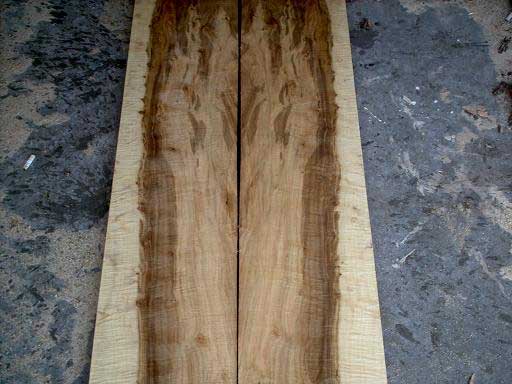Question
Well, I've been modifying my Wood-Mizer blades from the factory 10 degree back to 7 degree to saw all this dead, dry ash we are getting. It works well on dead hard maple too, which I think is harder than the ash. But man, when I put this green 24" hickory butt log on my mill, I had a heck of a time keeping the cuts flat. My blades might not have been tip top, but they would have cut ash and maple. The cut waved in the butt flare even when sharp. It took 3 blades to cut the thing into 8/4, which wasn't many cuts! (Well, one was already used to start with, and the last one was still okay, but still...) Maybe set could be the thing? Wood-Mizer is sending me their double hards with a .24 set (I swear it used to be more like .18 5 years ago, but could be wrong). Maybe less set? .20? I've got an electric 15hp motor, so my blades have to be in perfect order to cut much of anything. I've read the wider the cut, the more set you need, and some of these cuts were 18"+.
Forum Responses
(Sawing and Drying Forum)
From Professor Gene Wengert, forum technical advisor:
A wide (or deep) cut generates a lot of sawdust that must be carried in the gullet until the blade exits the cut. Cutting real slowly to avoid filling the gullets (taking a small bite) will generate very fine dust, which will spill out of the gullet. Oftentimes with dense wood, we cut more slowly, as we are short on power. A more aggressive cut will generate so much dust that the gullet will fill and the dust will spill out the sides also. When sawdust is spilling, it will rub the blade, heat it, and cause wavy cuts. More set does not help, as there will be more sawdust, but the gullet size is not larger. Spilling in the winter can be really tough, as the sawdust freezes to the lumber faces after it spills.
The solution is a blade with a larger gullet. Some folks also like a special gullet design that keeps the sawdust moving within the gullet. Note that old gullets can have worn edges, which helps spilling, so keep the edges sharp. As with all saws, sharp teeth are best.
I had one mill that ground off every other tooth. This meant that the remaining teeth took a bigger bite, the dust was larger and spillage was less, yet the overall power was the same. Of course, the gullet must be large enough to handle the larger bite. I have not seen this approach recently, but for cuts that are not too deep, I would encourage someone to try it and report back.
One thing to add is to watch for sap buildup on the blade and the side of the teeth. Hickory is bad about sap buildup, as is ash. Use lots of water and your best soap mixture. We’ve been real happy using Murphy’s oil in our water tank. But maybe Pinesol or windshield wiper fluid mixed in would work better in this case. Whatever it takes to keep the sap off the blade.
7 deg DoubleHard would be my blade of choice. .055s would probably work better than .045, if you have them and can run them.
Also, inspect your main drive belt and make sure it’s in good condition and up to proper tension. It’s easy to let a main drive belt get worn and a little too loose. It’ll saw easy stuff just fine, but when it comes to hard cutting, it’ll slip. Even a little slipping will reduce the blade speed and dramatically reduce the cutting power, thus producing wavy cuts.
Contributor A, is that with Wanda or the LT70? We’ve used 10 deg blades for years but have now standardized on the 7 degree – finding they cut most everything better than 10 degree. But we saw almost all hardwoods and a few ERC.
